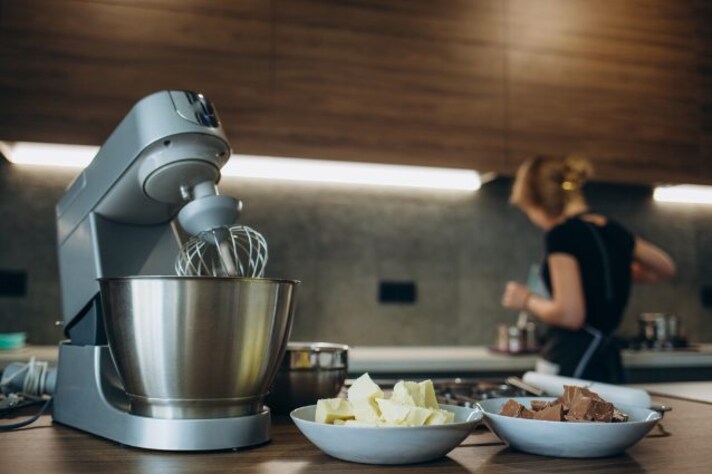How to Adjust Your Kitchen Stand Mixer for Better Baking Results
A stand mixer is a kitchen workhorse, but if it’s not adjusted properly, it won’t deliver its best performance. From uneven mixing to dough that sticks, small issues can make a big difference. Here’s how to fine-tune your stand mixer to keep it running smoothly.

Stand mixers are built to last, but even the best models need occasional adjustments. Over time, you might notice that the beater doesn’t reach the bottom of the bowl, ingredients aren’t mixing evenly, or the mixer seems louder than usual. Luckily, adjusting your stand mixer is a straightforward process that can make all the difference in your cooking and baking. Here’s what you need to know to get your mixer back on track.
How to Adjust the Beater Height
If your stand mixer’s beater is too high, it won’t mix ingredients at the bottom of the bowl. Too low, and it might scrape the bowl, causing damage. Adjusting the height ensures thorough mixing and protects your mixer.
To adjust: Turn off and unplug the mixer for safety. Tilt the head or lower the bowl, depending on your model, to access the adjustment screw. Locate the small screw near the base of the stand mixer head. Use a flathead screwdriver to turn it slightly. Turn clockwise to lower the beater. Turn counterclockwise to raise it.Test the adjustment by placing the flat beater in the bowl and running the mixer on a low speed. A properly adjusted beater should just clear the bowl’s surface without scraping.

How to Check the Beater Clearance
To ensure your mixer is set correctly, use the "coin test." Place a coin in the bottom of the bowl and attach the flat beater. Run the mixer on the lowest speed. The beater should gently nudge the coin around the bowl without it staying in one spot or being untouched. If the coin doesn’t move, adjust the height as described above until the beater moves it consistently.
This test is especially useful for bakers, as precise clearance ensures your batters and doughs are evenly mixed every time.
How to Fix Wobbly Bowl or Attachments
If your mixer bowl feels loose or attachments wobble during use, it’s time to secure them. For bowl-lift models, check that the bowl is locked firmly into place. For tilt-head models, make sure the locking mechanism is engaged fully to stabilize the head.
If attachments like the dough hook or whisk are loose, ensure they’re properly inserted and rotated into place. Over time, wear and tear can loosen connections, so regular checks can prevent unnecessary movement.

How to Deal with Noise or Vibrations
An unusually noisy mixer or excessive vibration could indicate an internal issue. While basic adjustments won’t fix a worn motor or gears, you can minimize vibrations by ensuring the mixer is placed on a stable, flat surface.
If noise persists or worsens, consult your mixer’s manual or consider professional servicing to address internal wear. Regular cleaning and proper use will help extend the life of your mixer and keep it running quietly.
How to Maintain Your Mixer for Longevity
Adjustments work best when paired with regular maintenance. Clean attachments and the bowl after each use, and wipe down the mixer base to prevent residue build-up. If your mixer has a lot of use, grease the gears as recommended by the manufacturer to keep it running smoothly.
Pay attention to performance over time. If adjustments don’t resolve issues or the mixer struggles with basic tasks, it may be time to replace worn parts or seek a professional tune-up.
;Resize,width=767;)
;Resize,width=712;)


